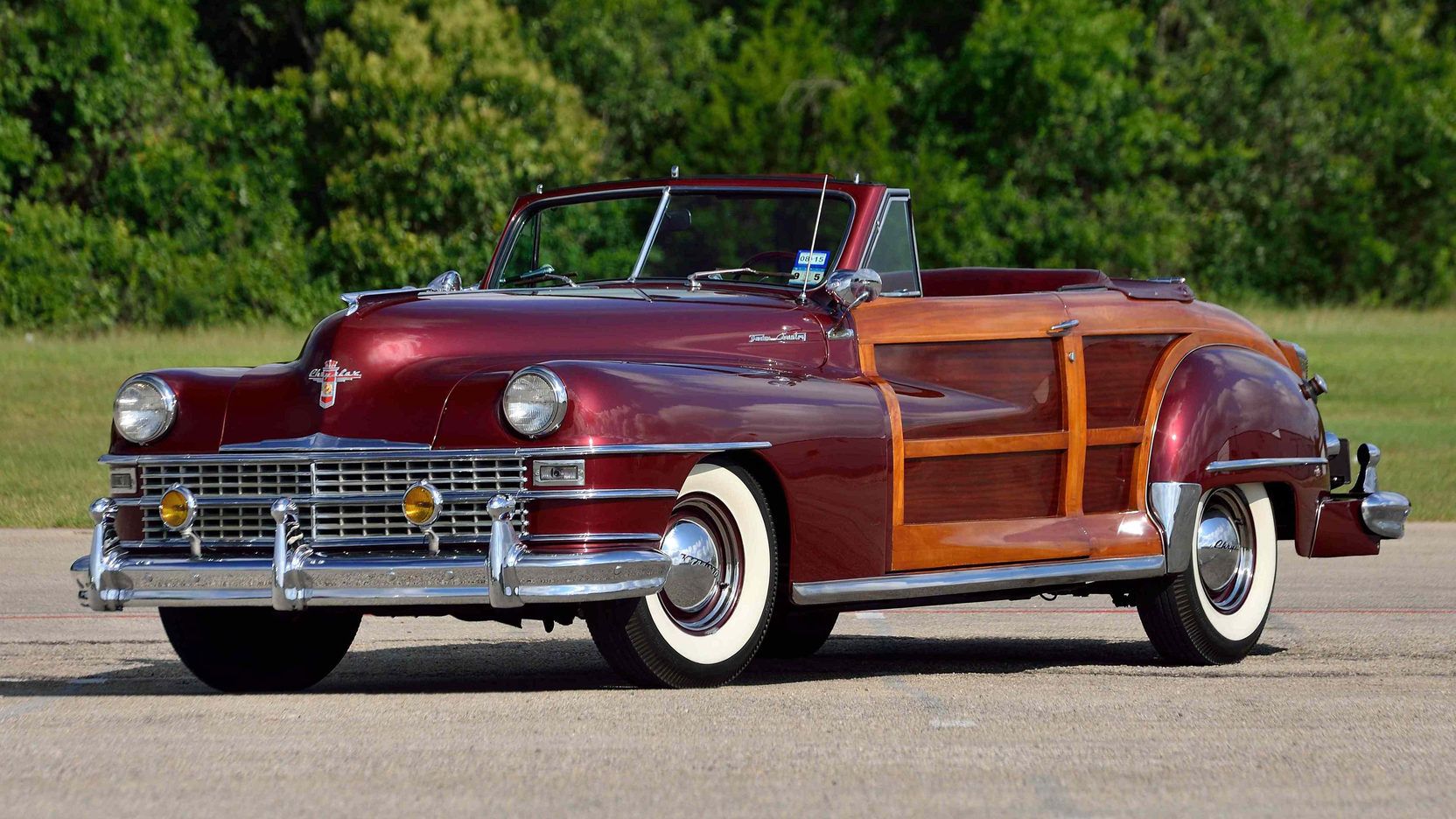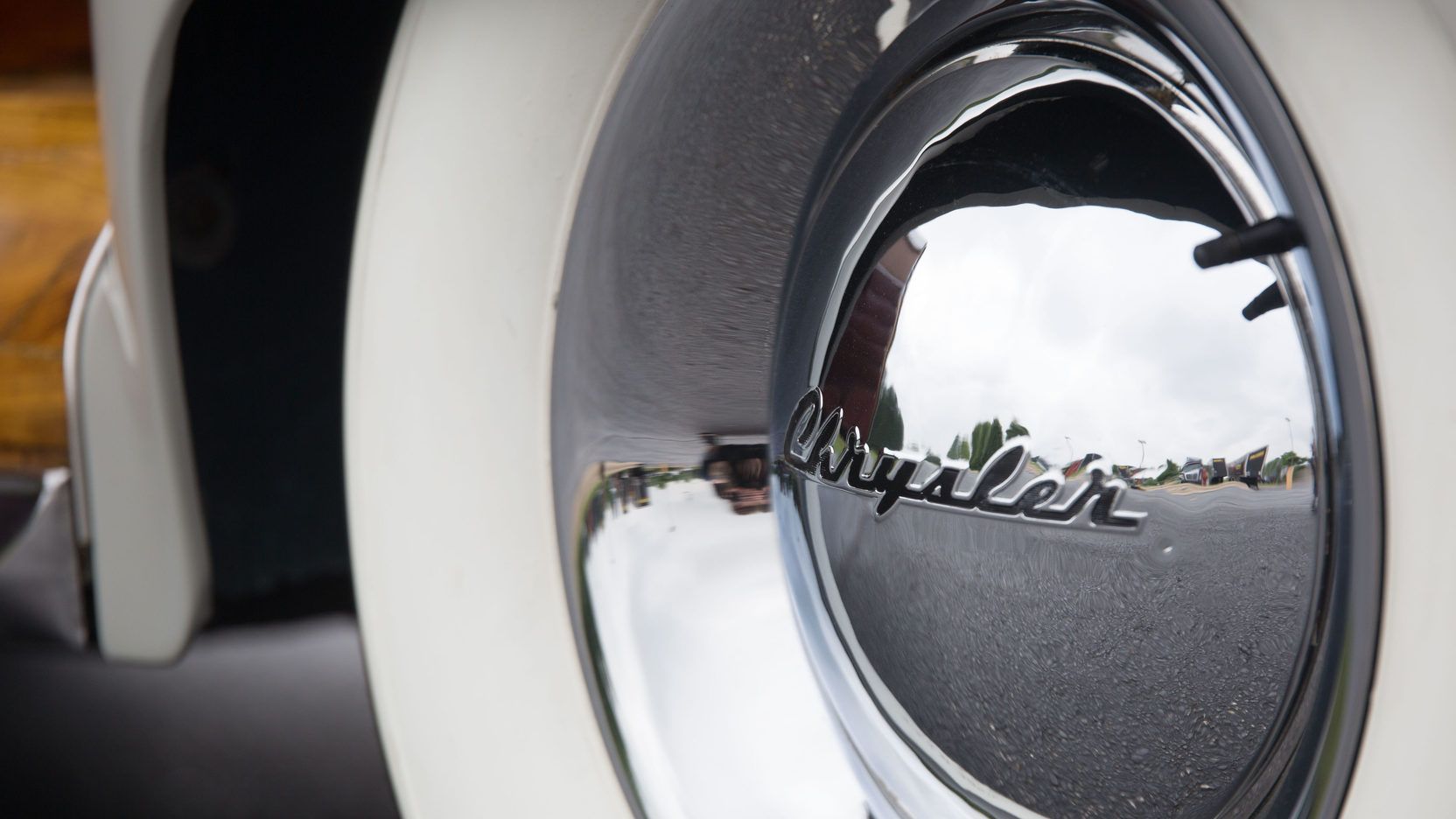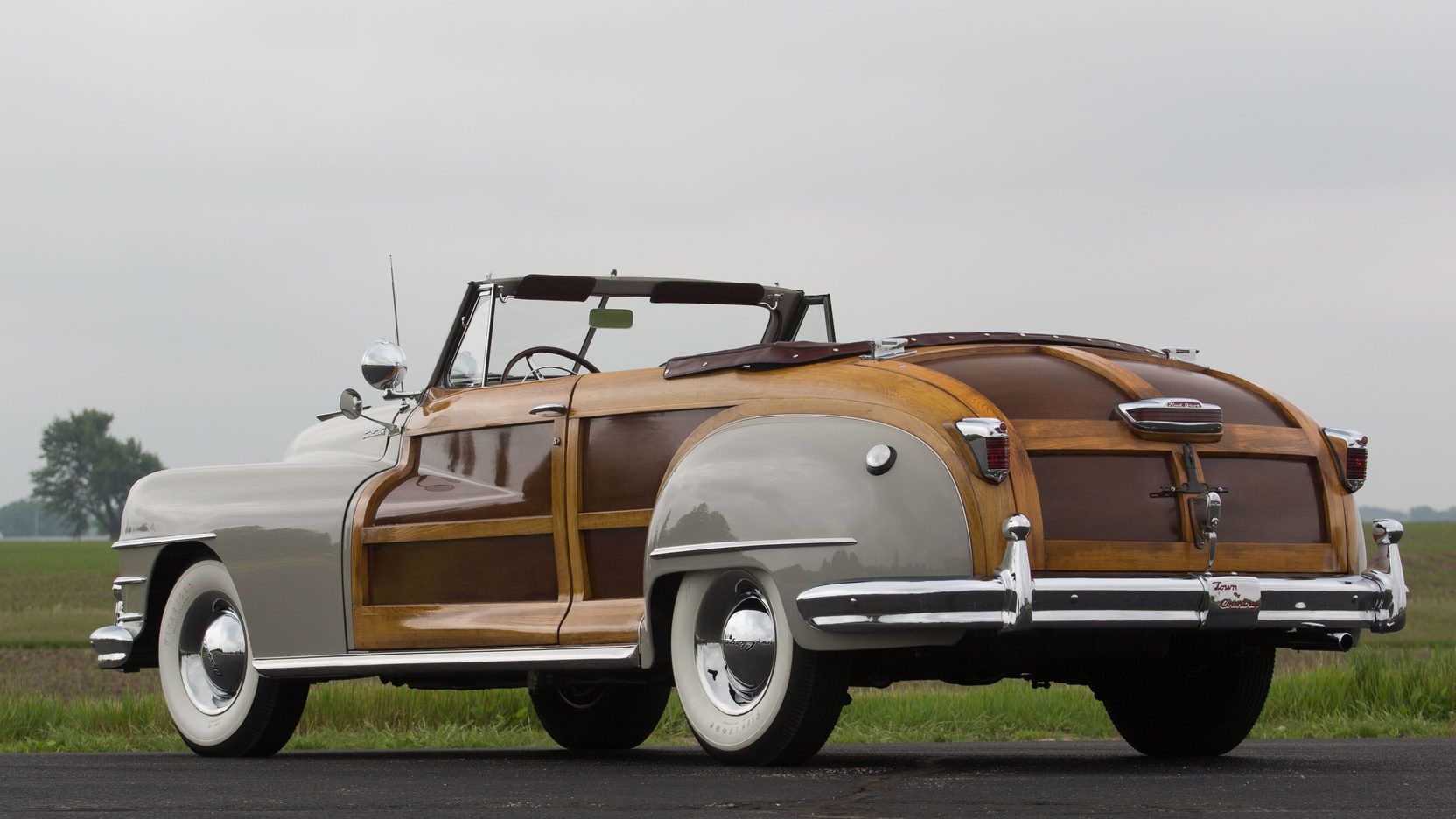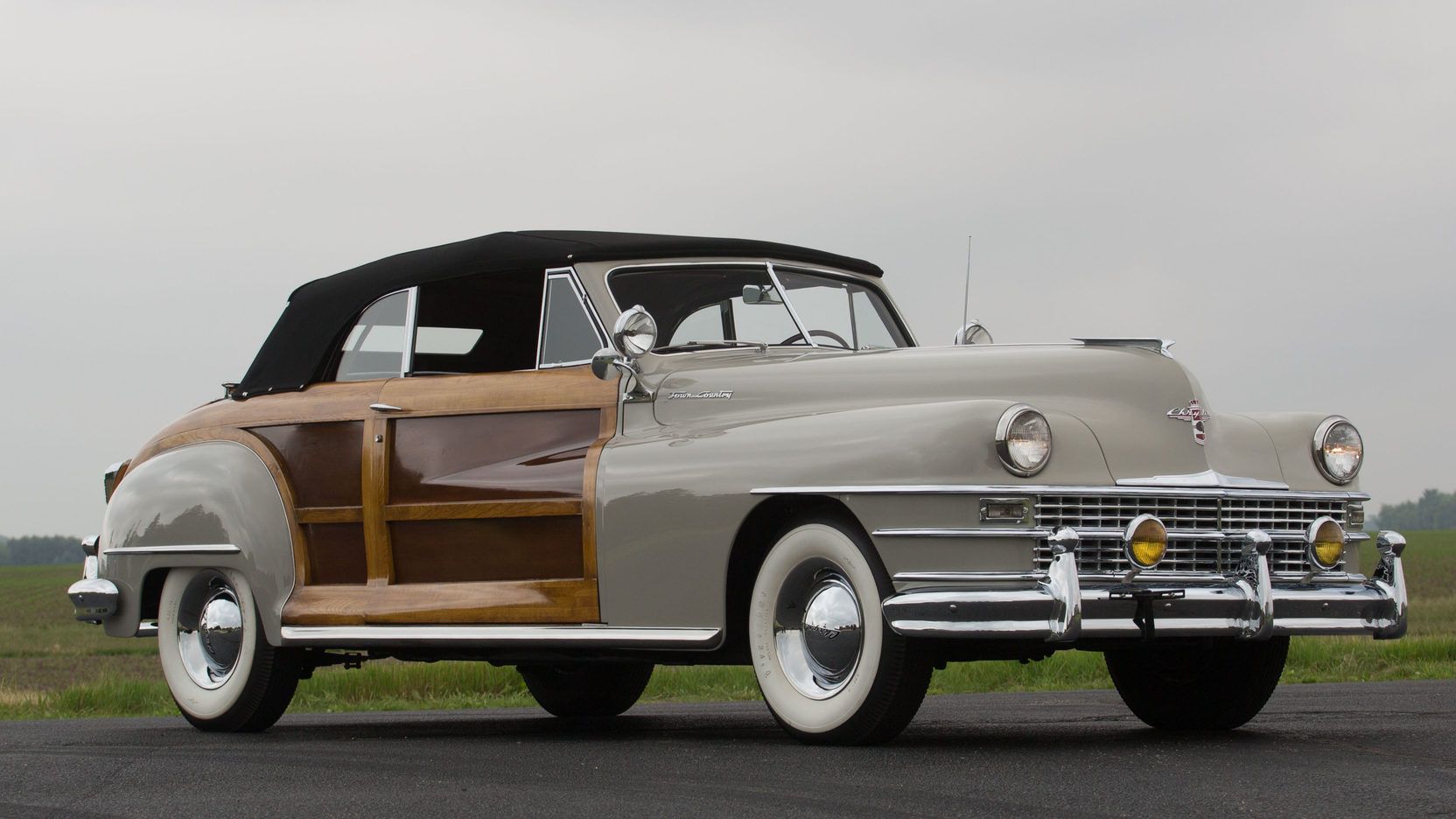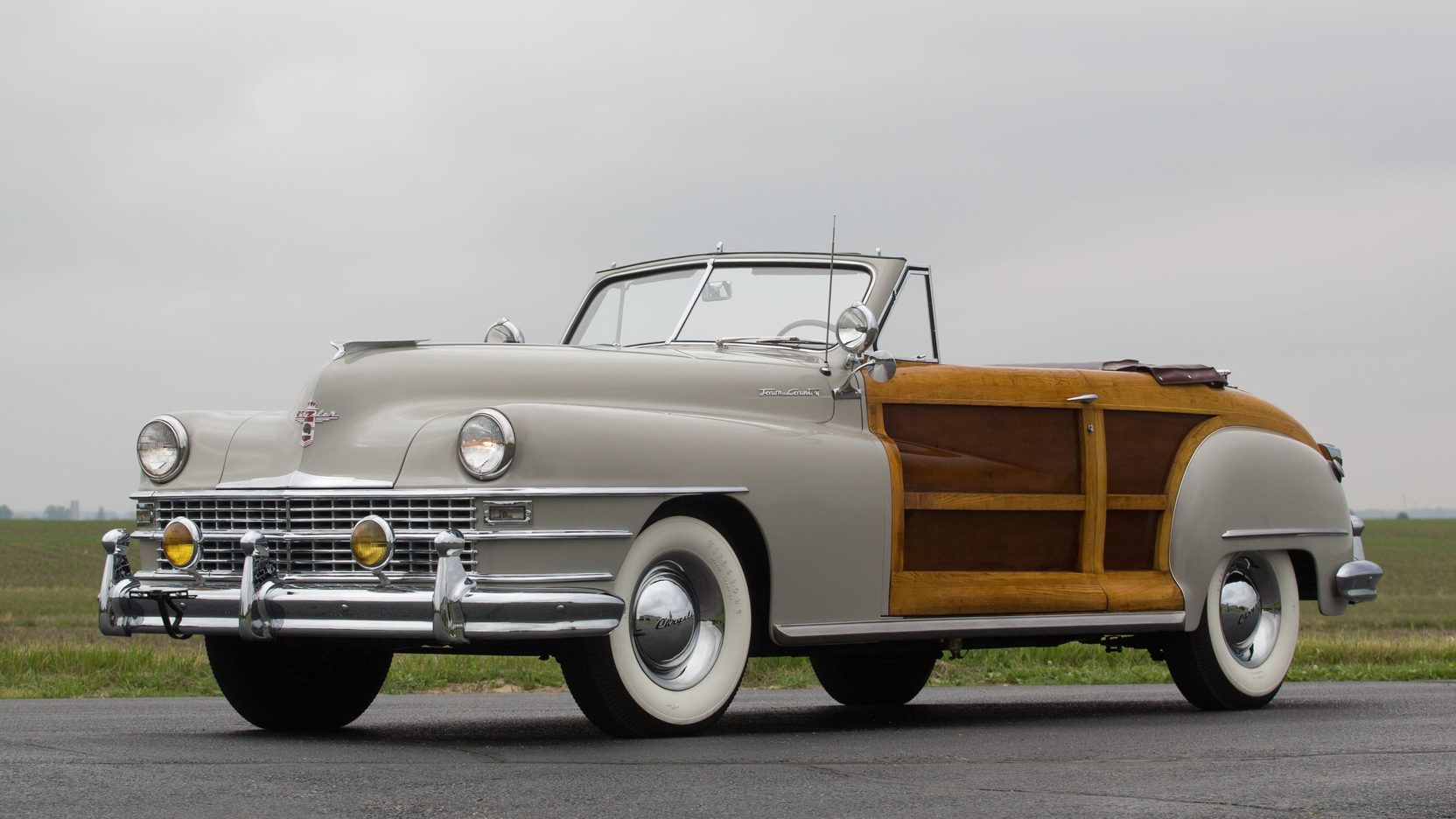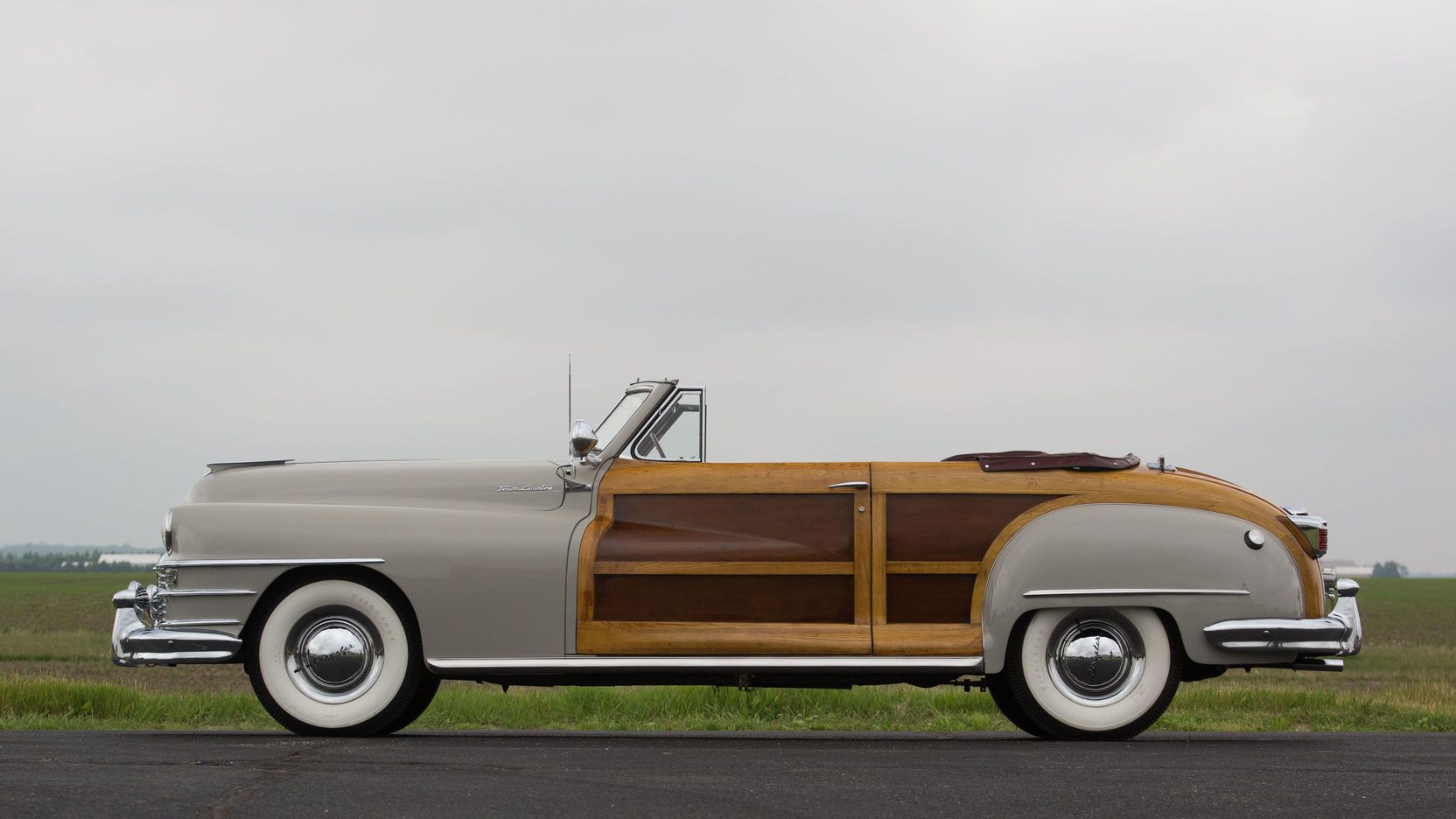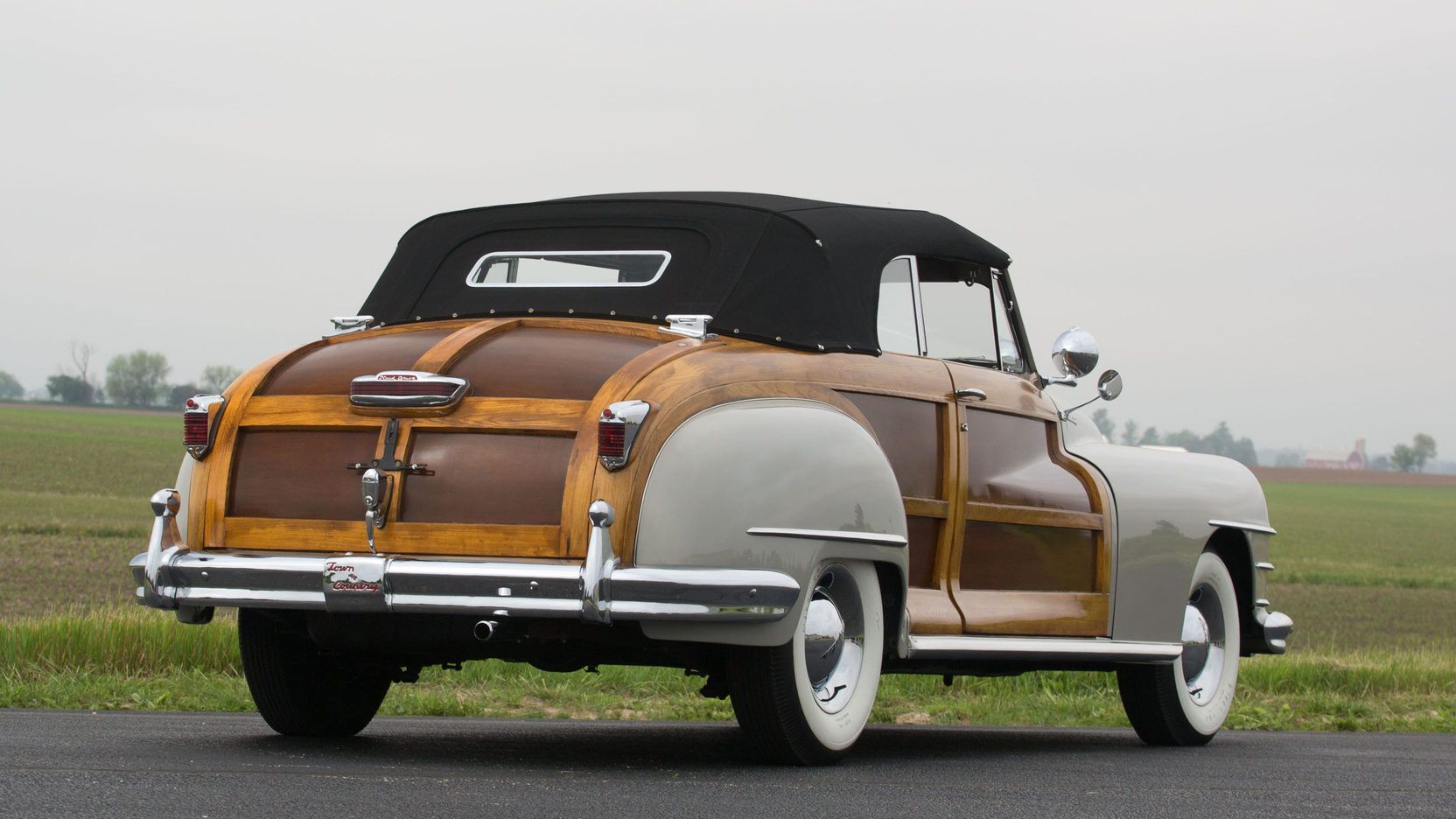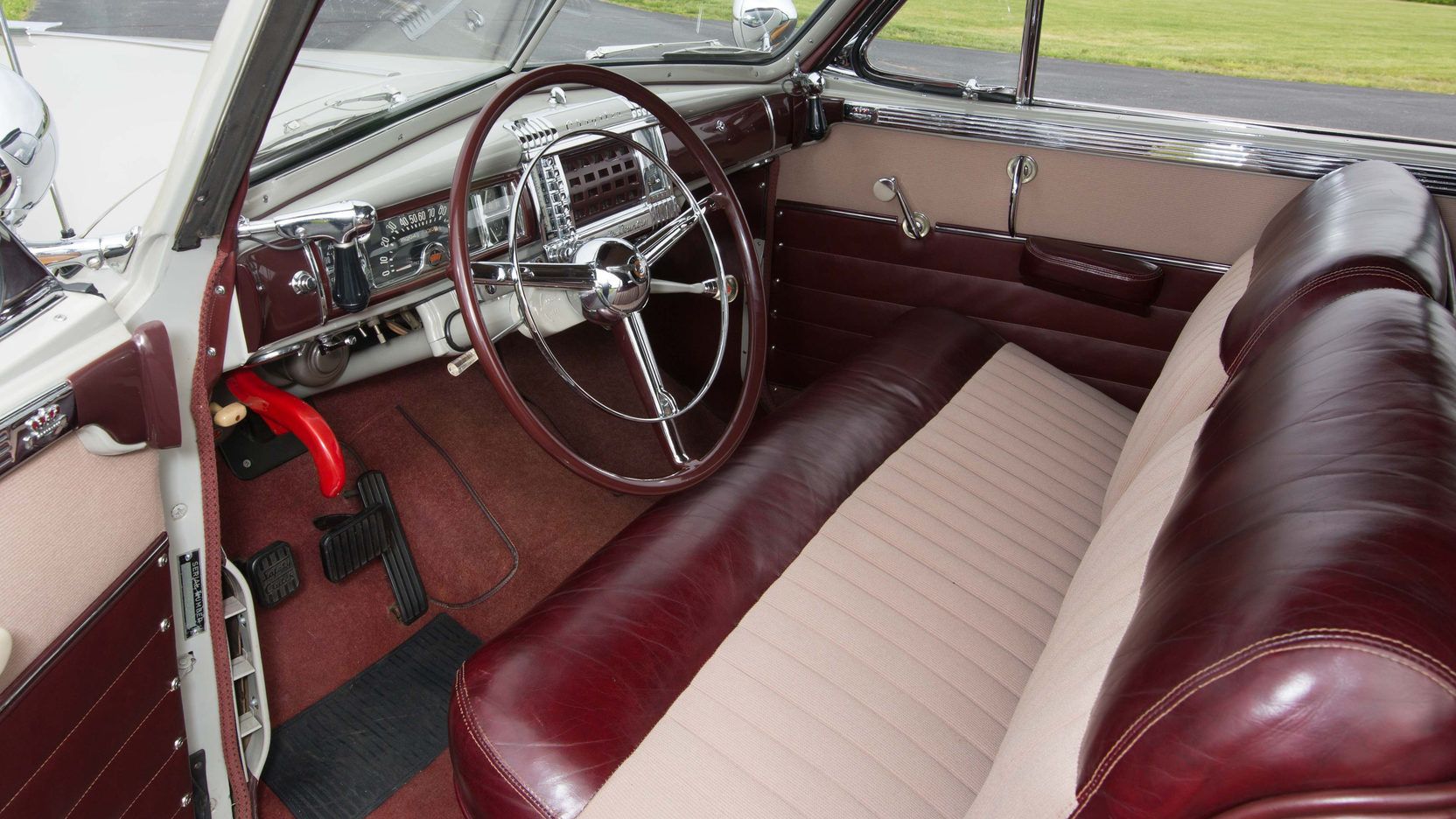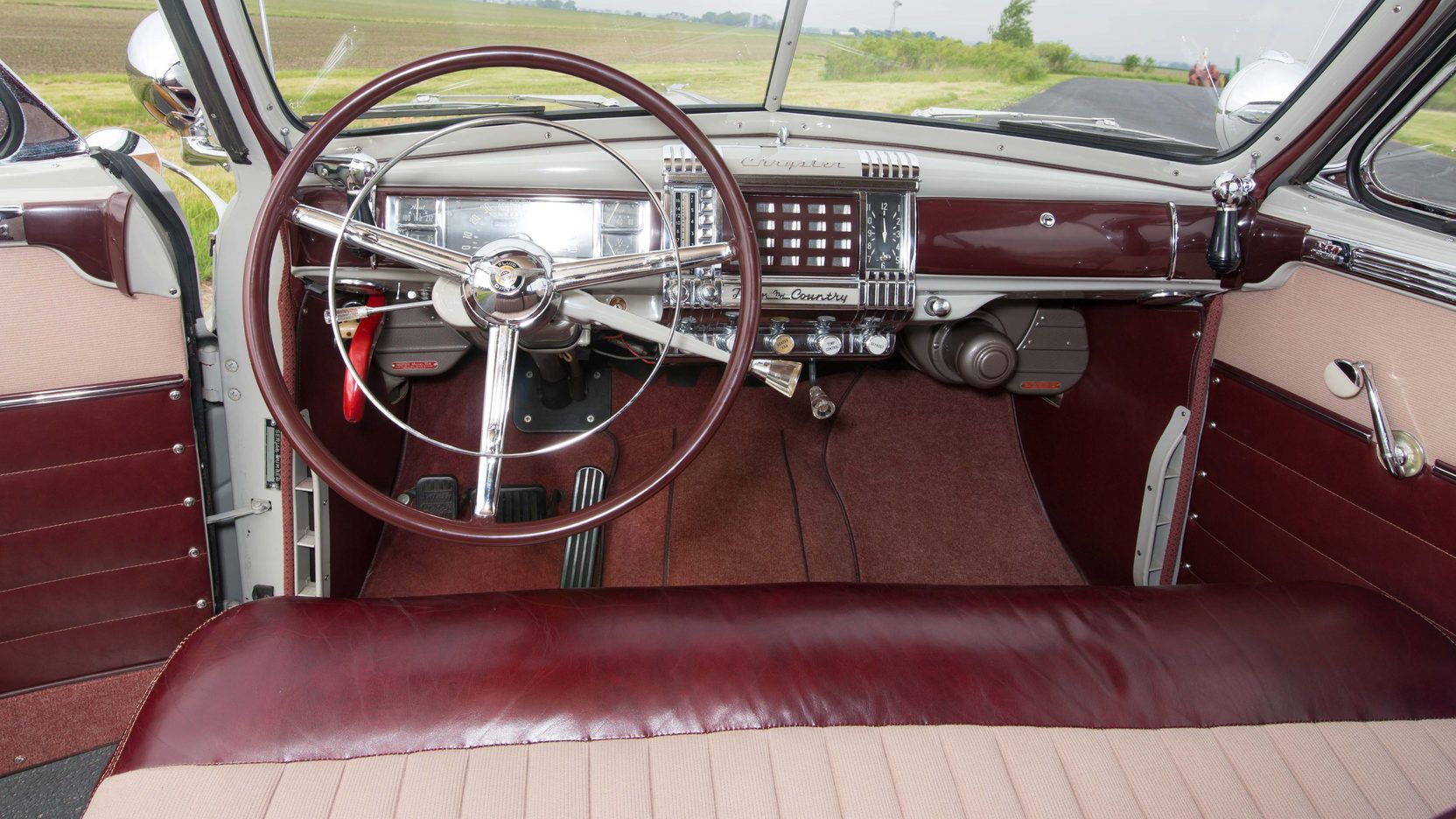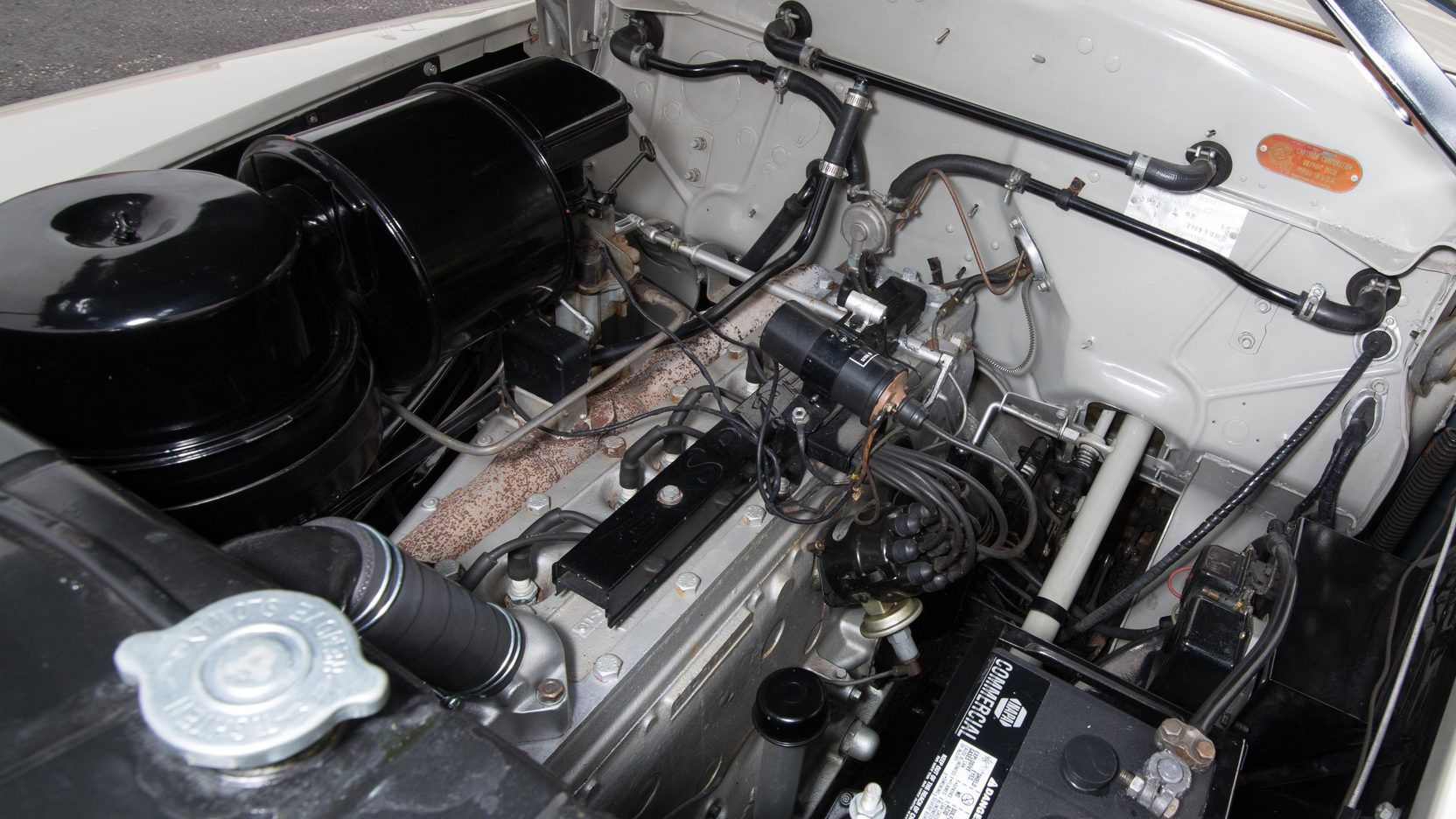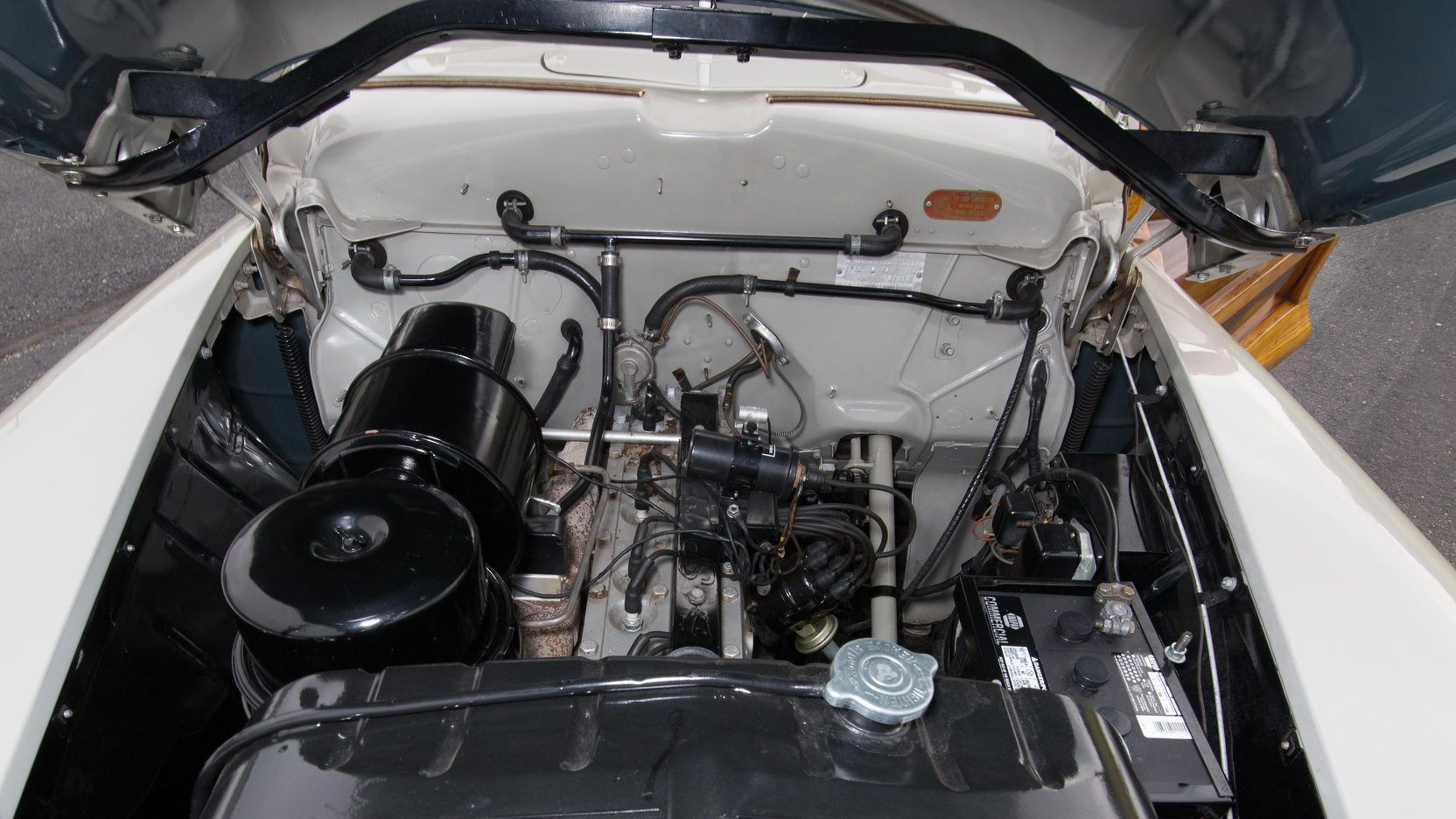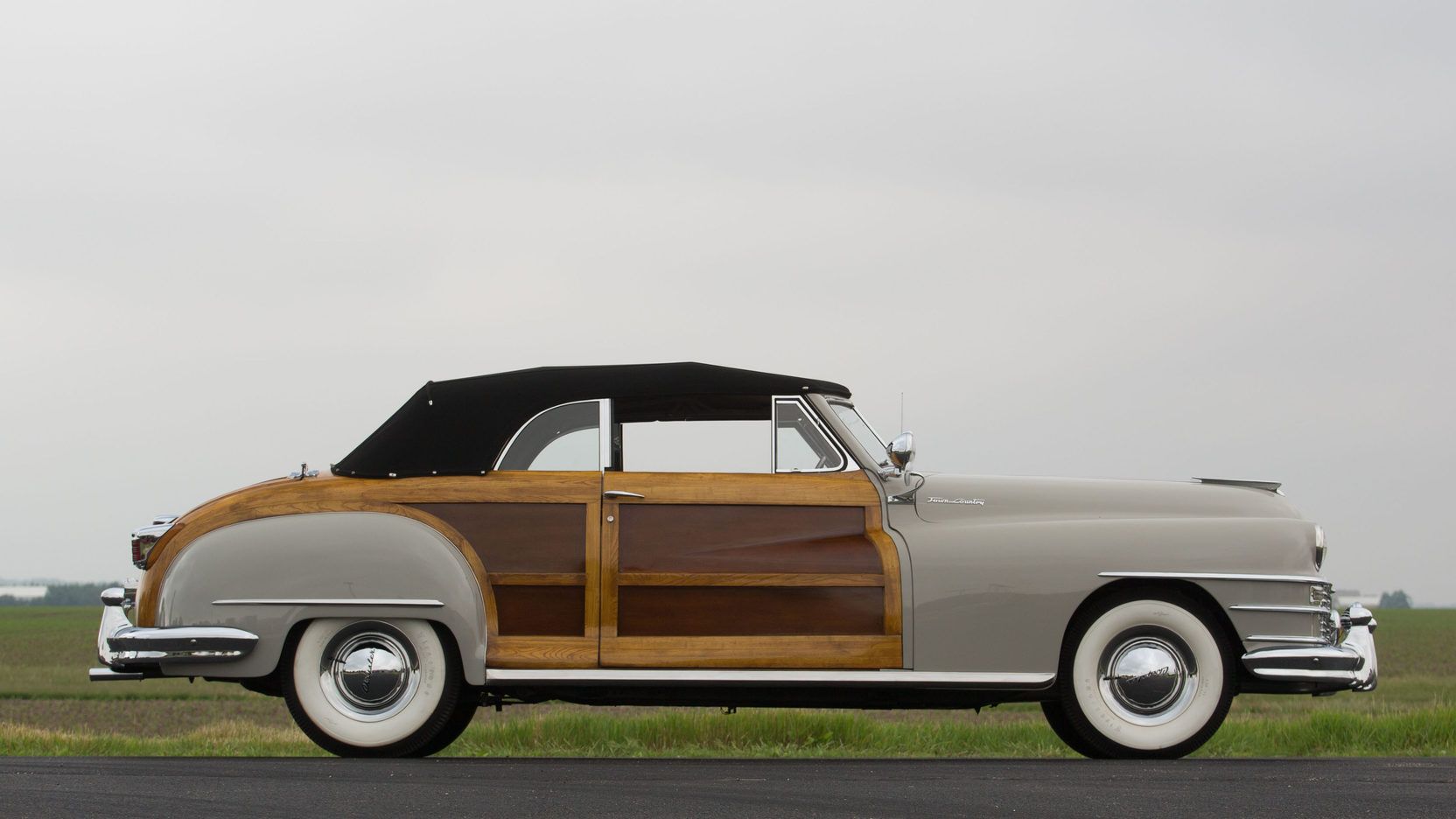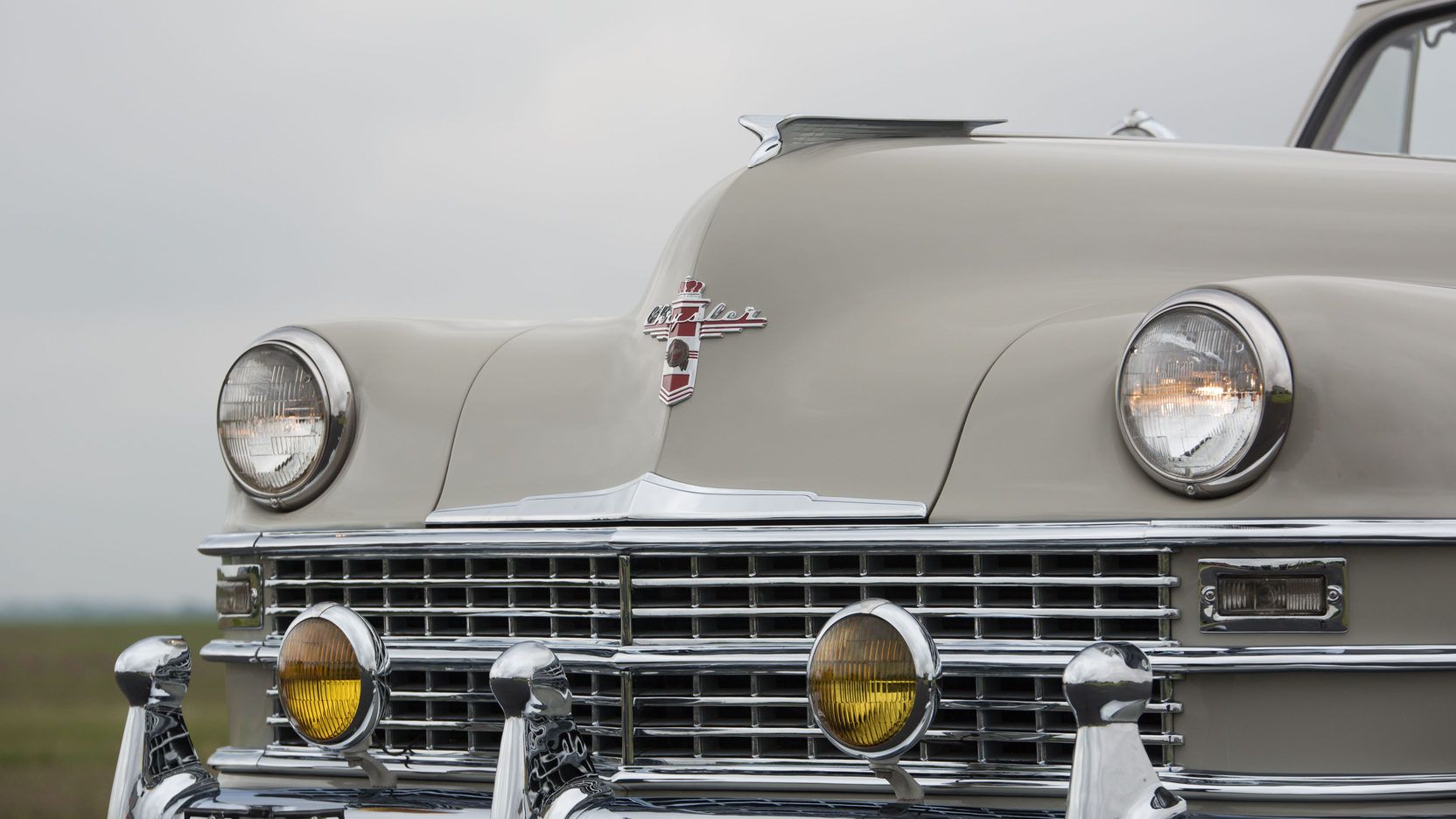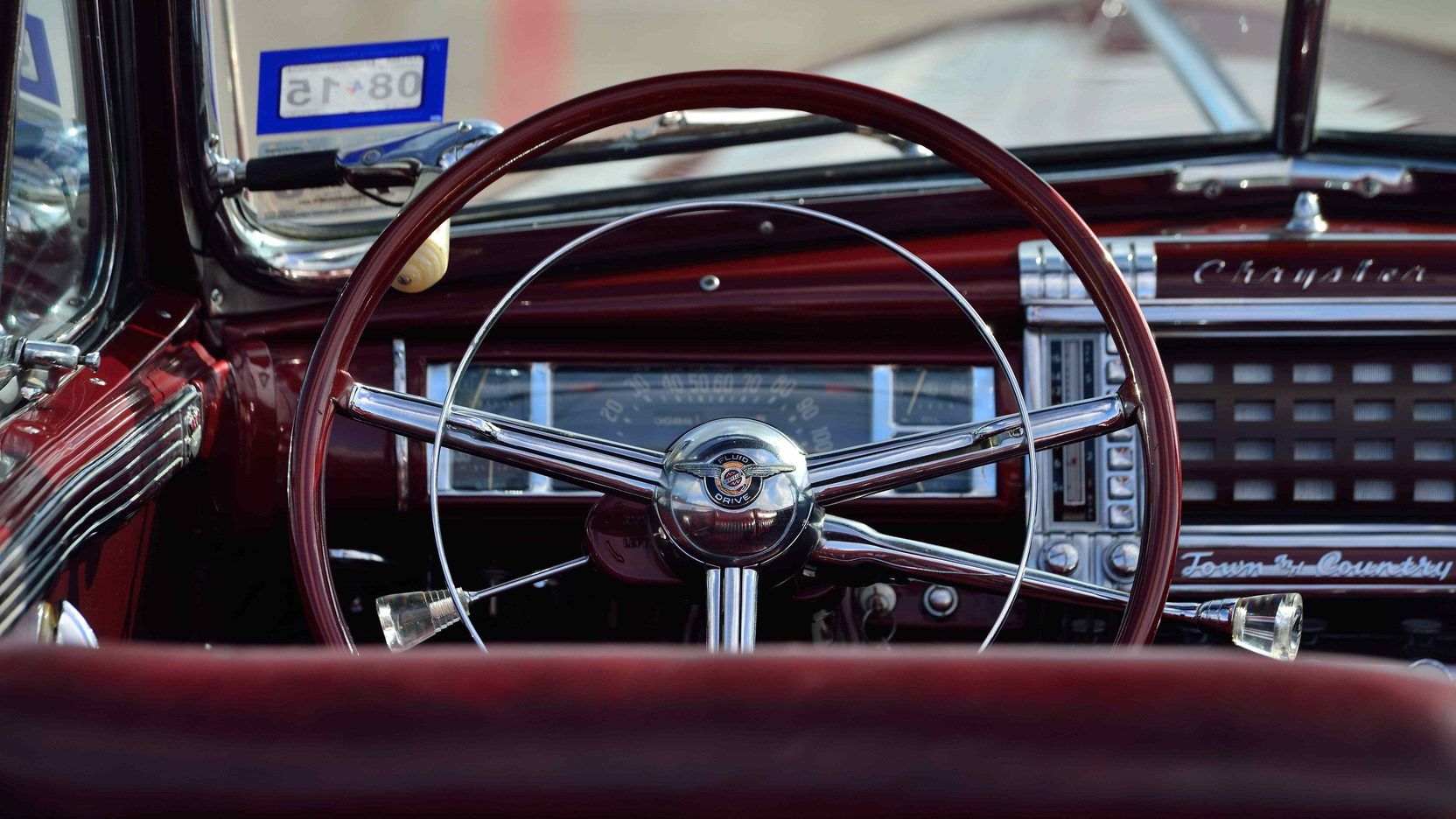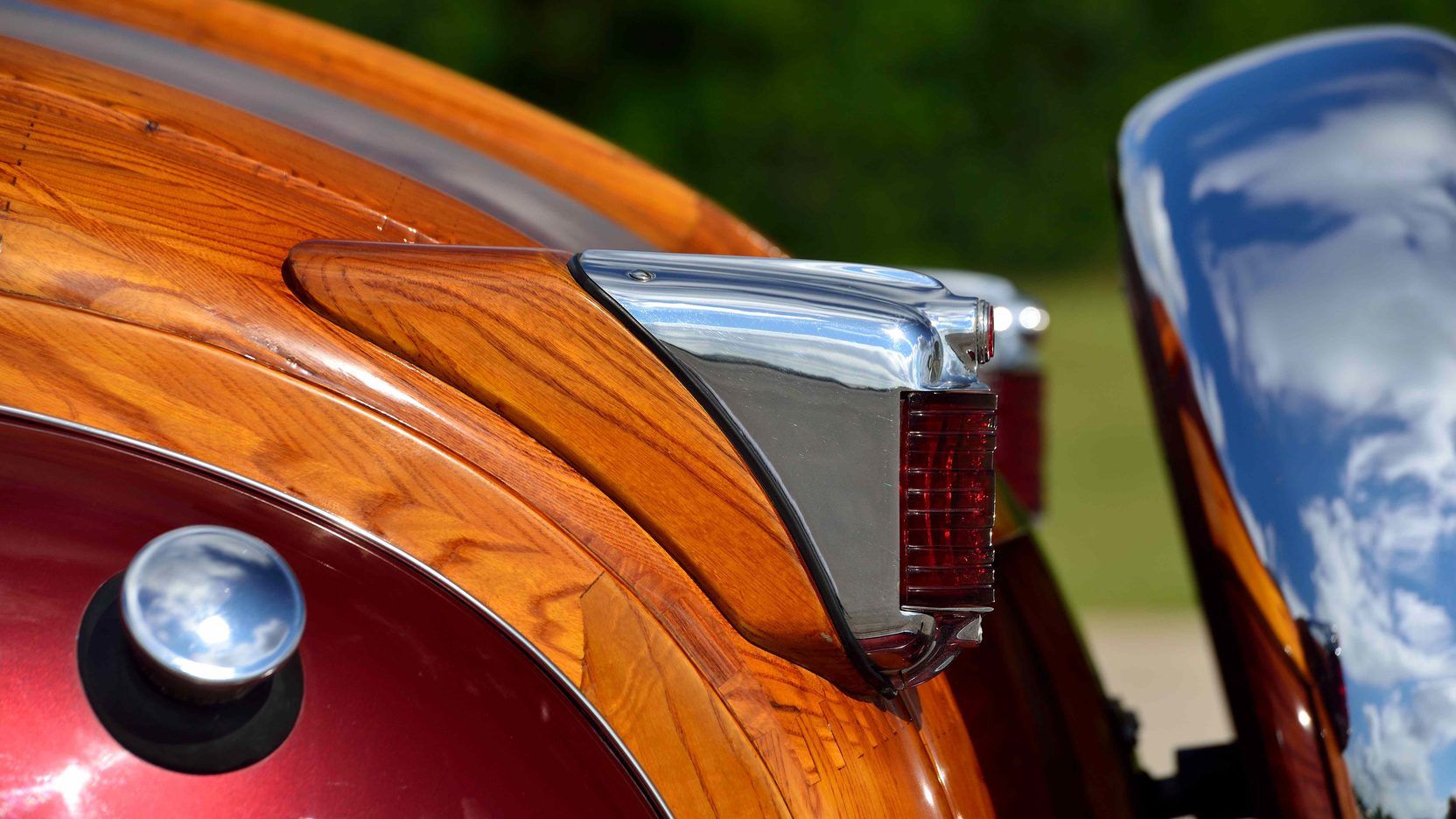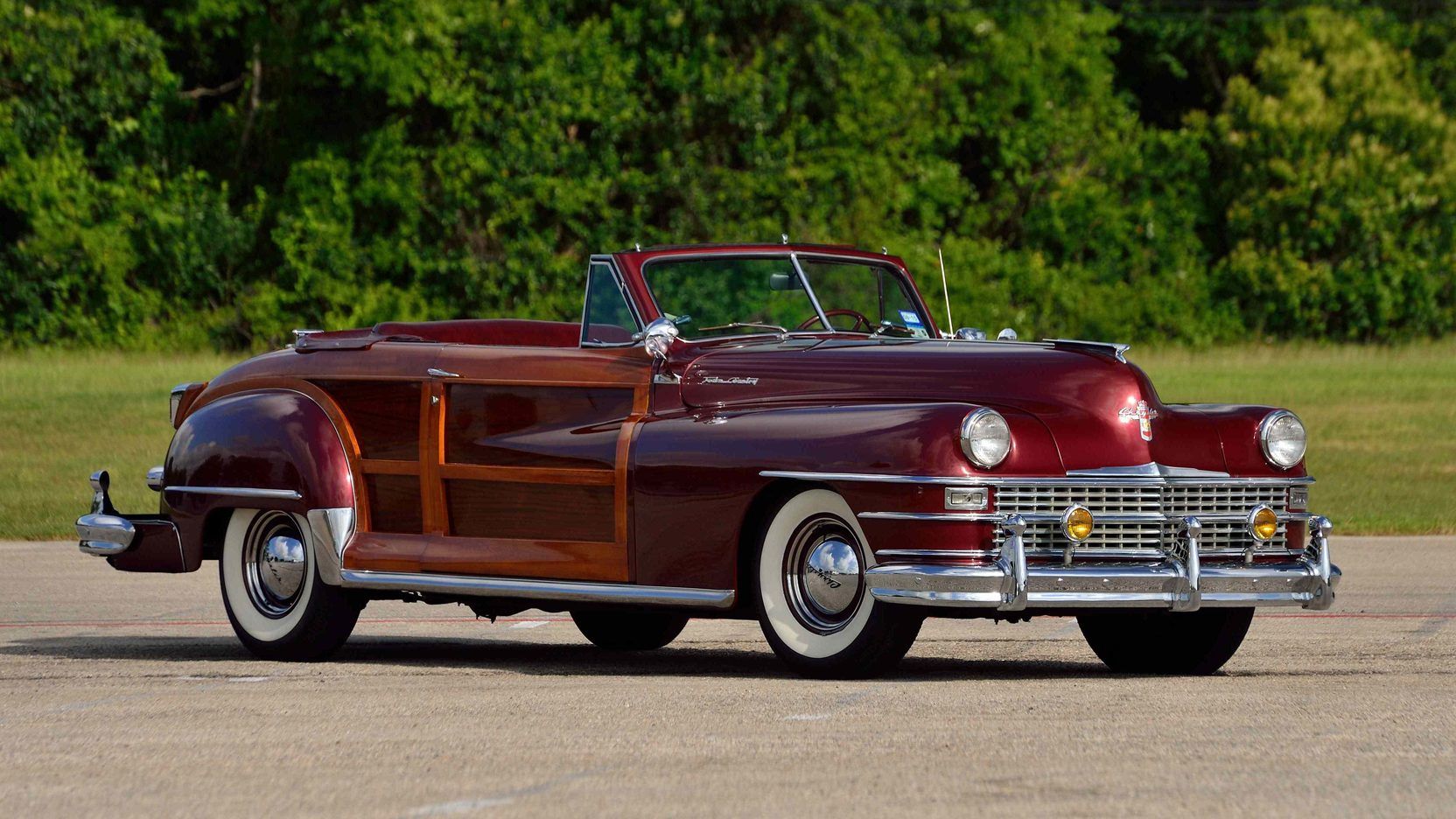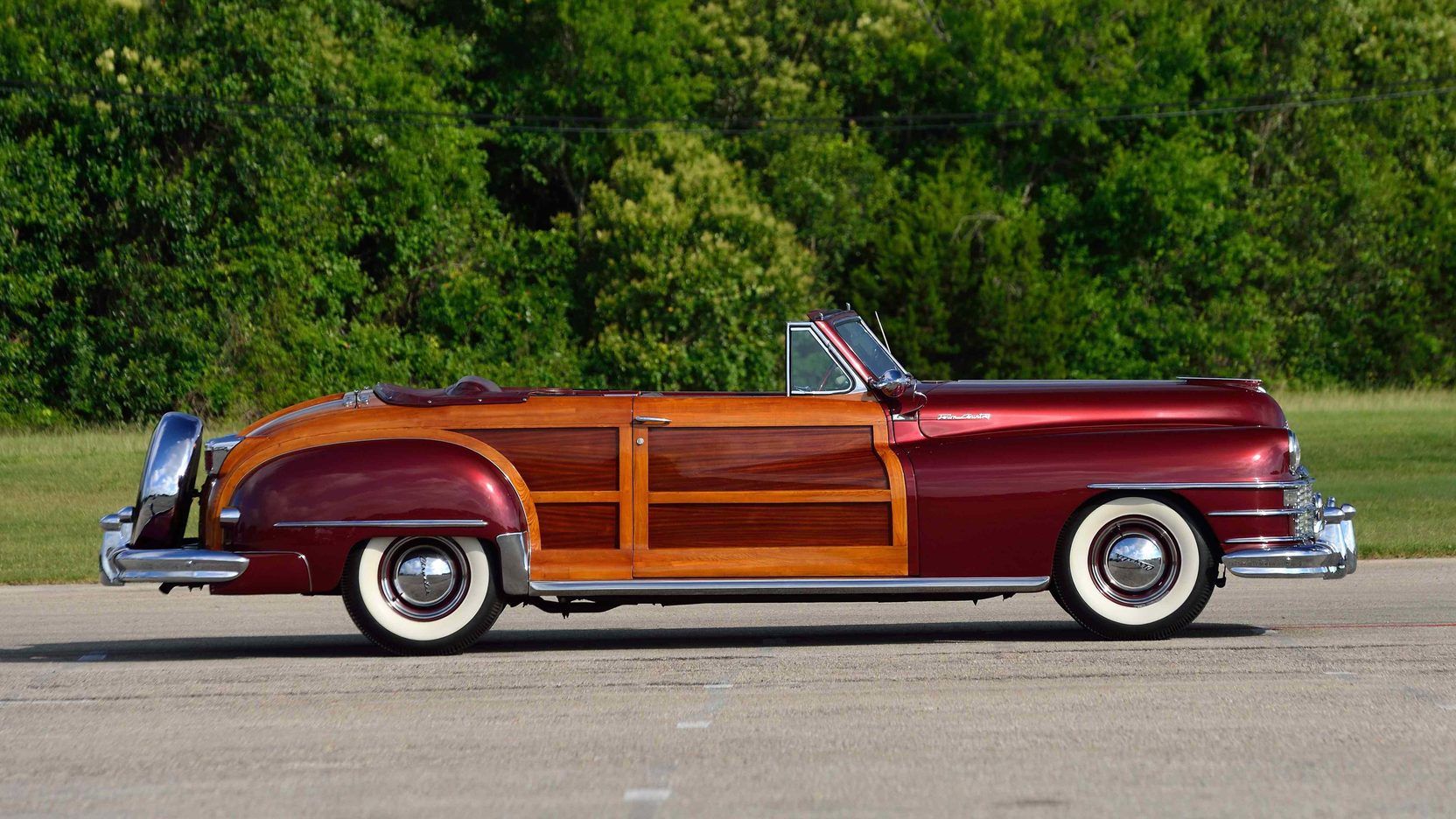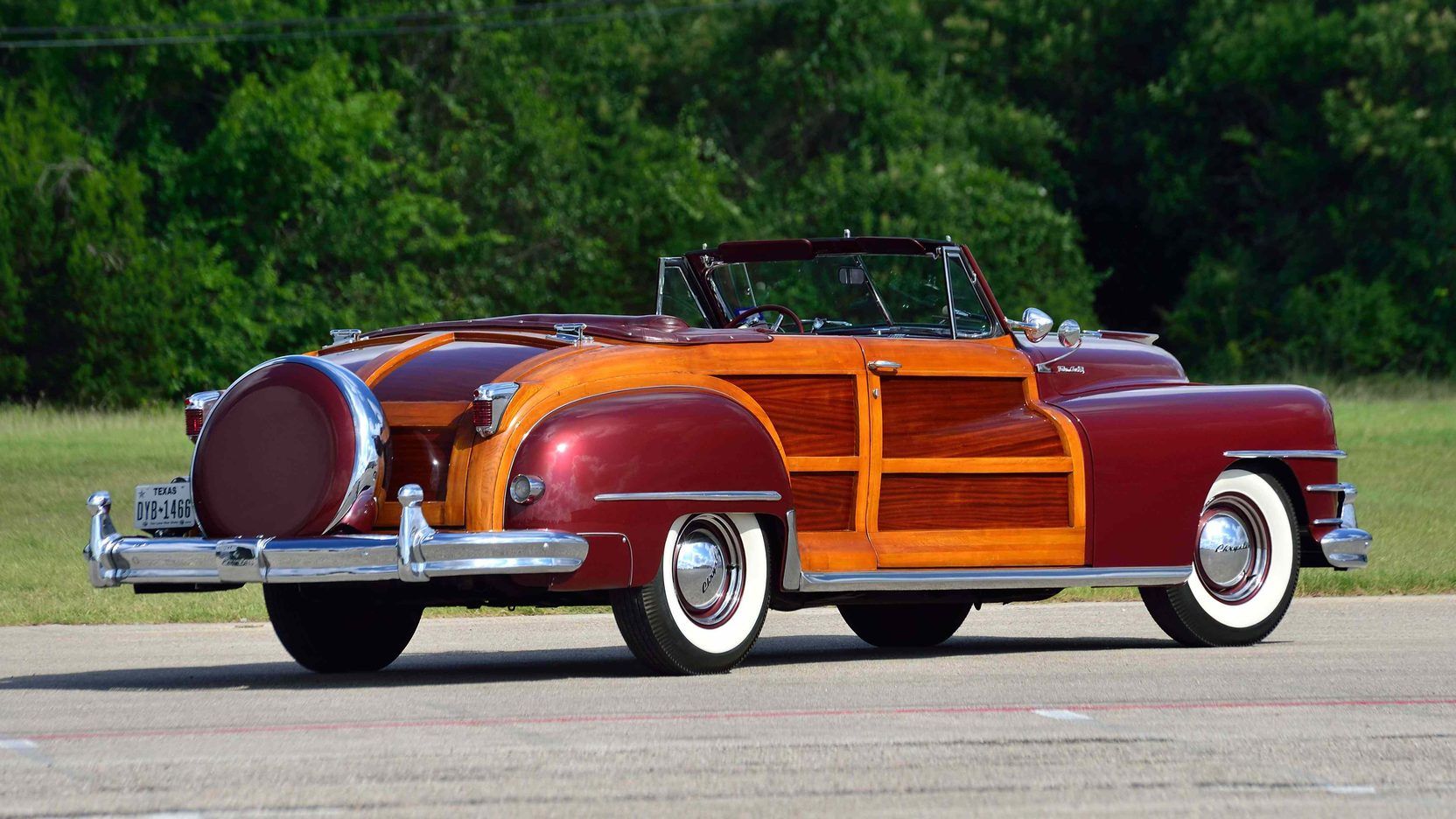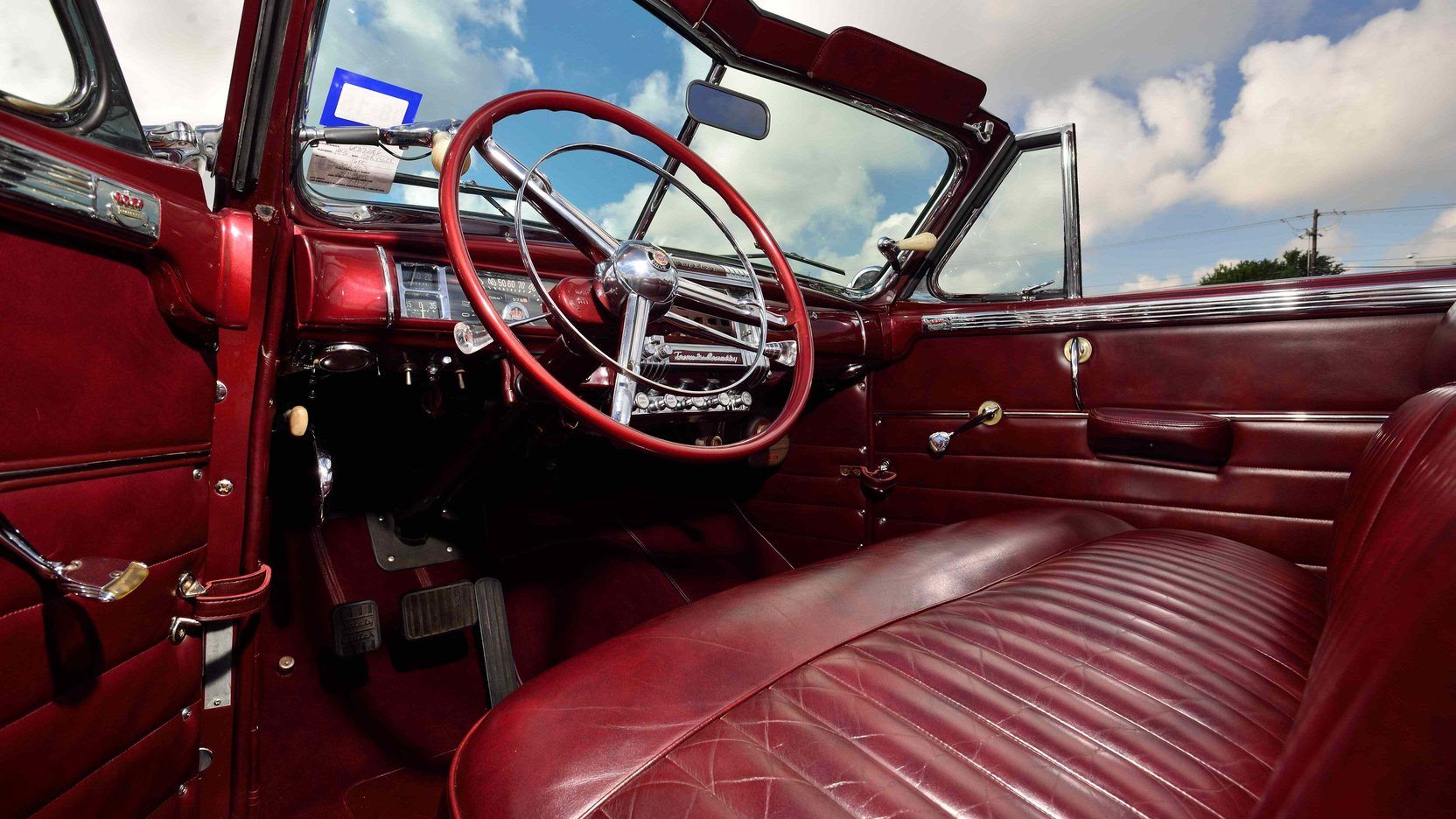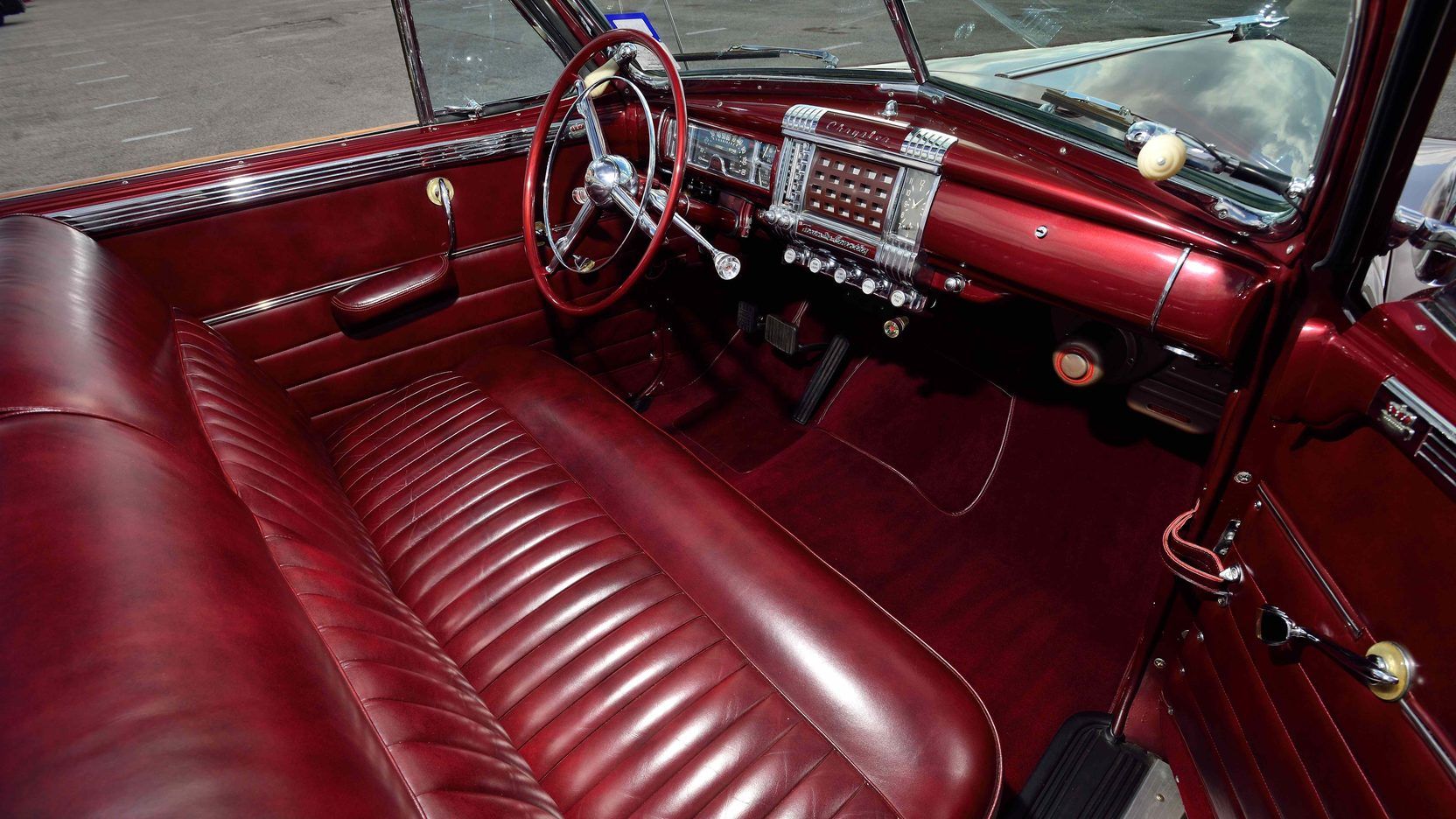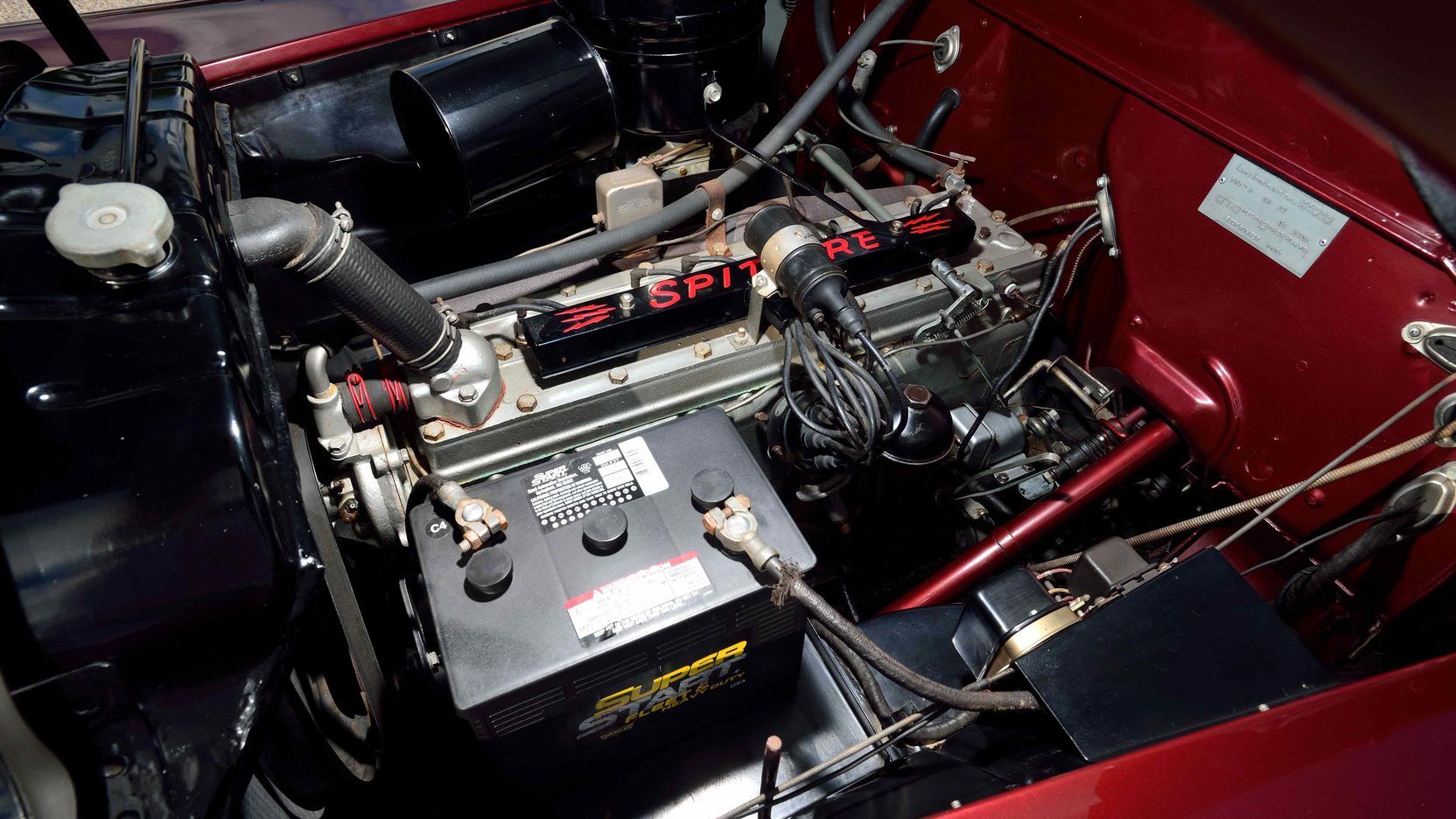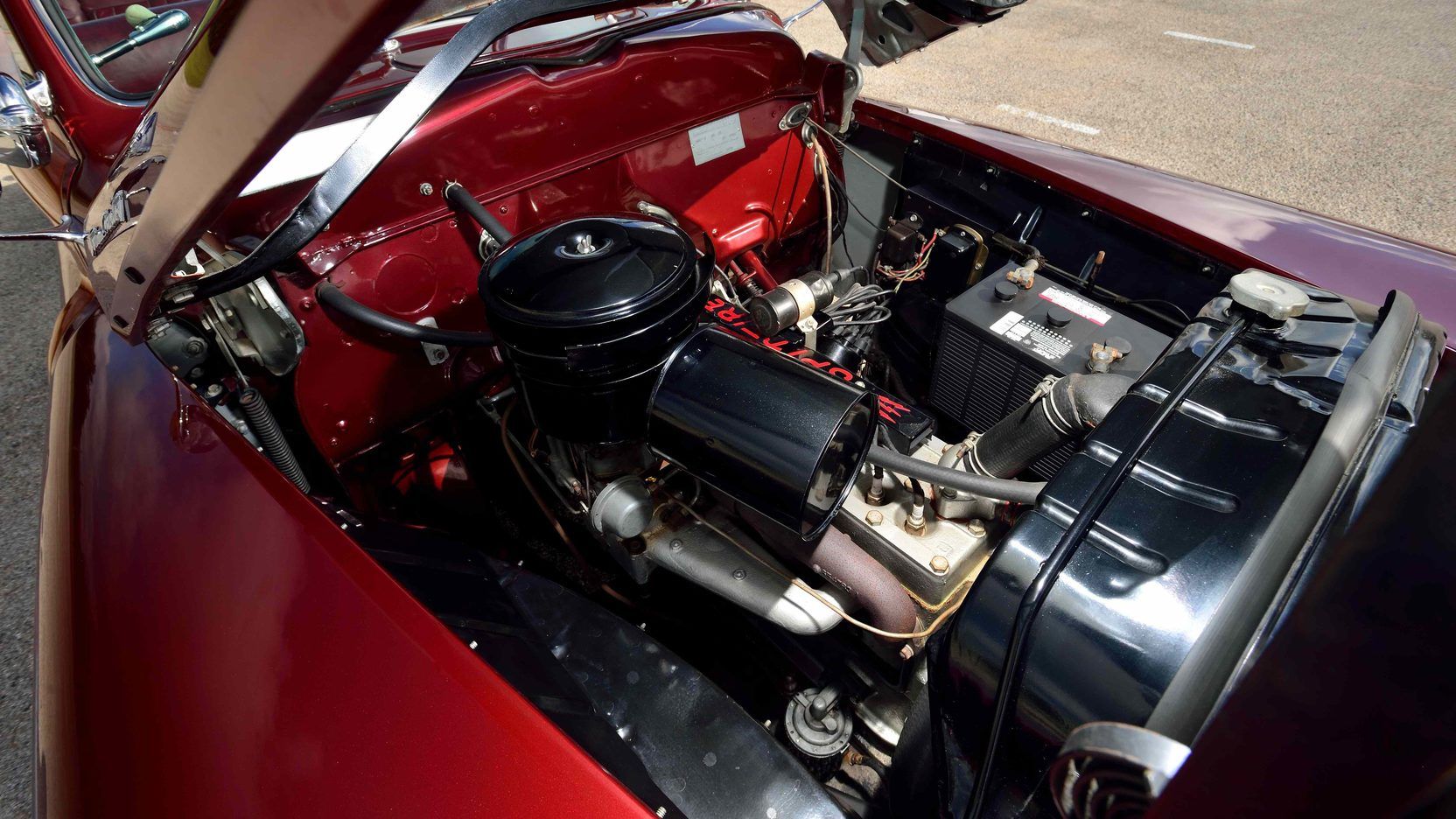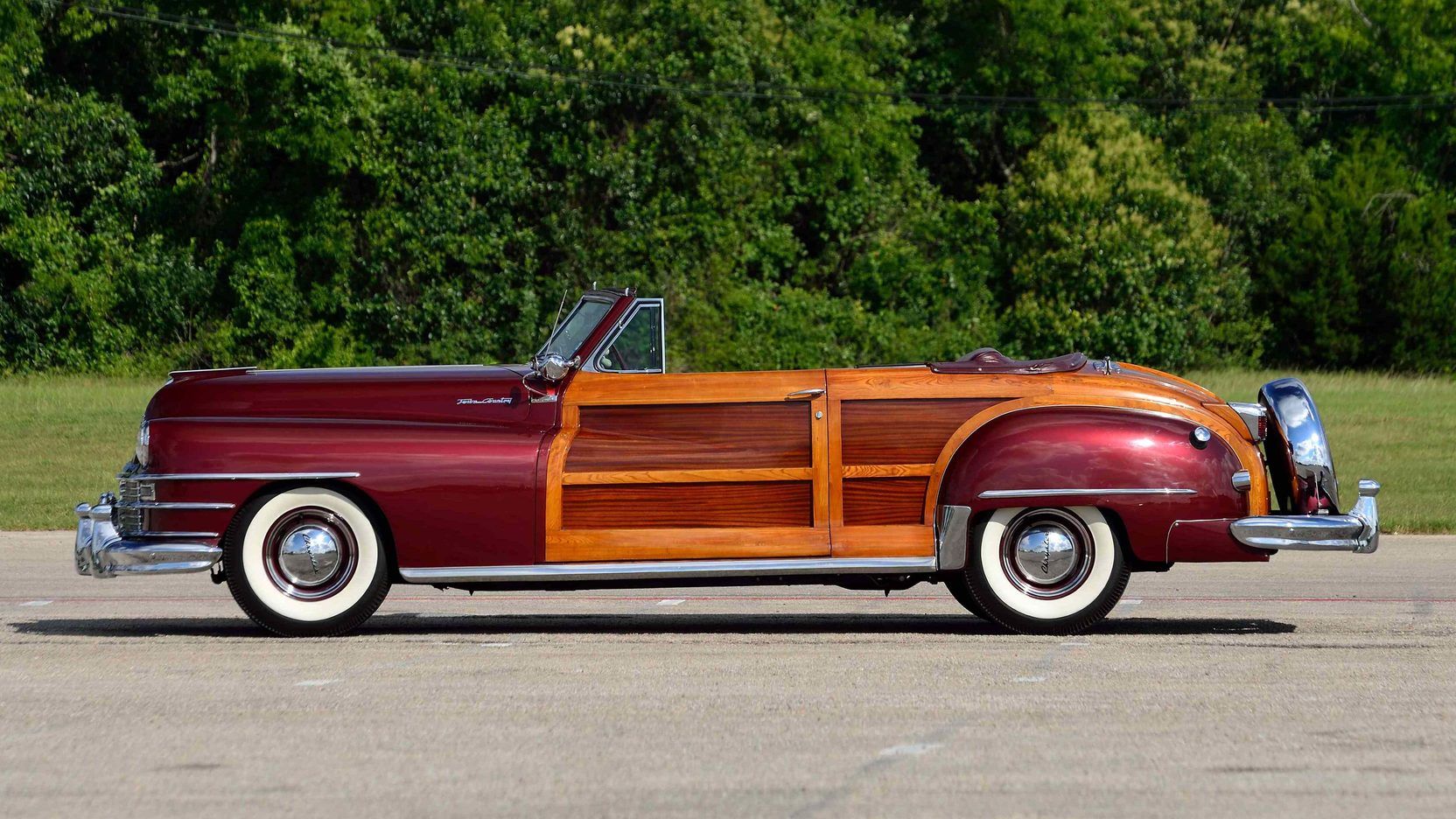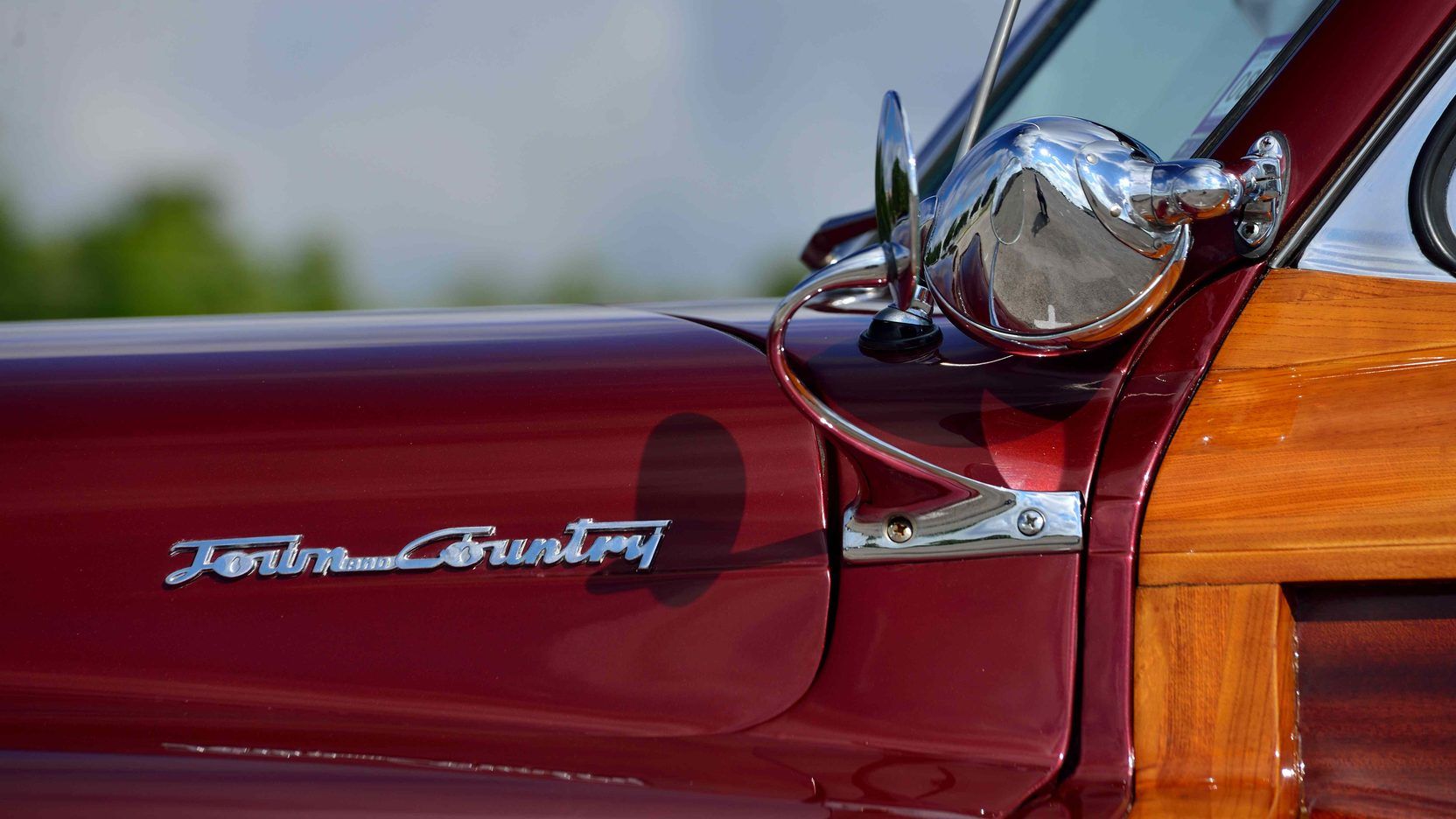Although the Chrysler Town & Country is mostly known as the minivan that the company launched in 1989 as a more luxurious alternative to the popular Dodge Caravan, the nameplate was originally used on a station wagon. First introduced in 1940 as a four-door, eight-passenger hauler, it was maintained in production for no fewer than eight generations, until 1988. However, while all generations of the Town & Country were station wagons of various sizes, the first-generation model also had sedan and convertible models. The drop-top was offered for the 1946 to 1949 model years.
The first-gen was launched in 1940, but production was discontinued after the 1942 model year due to the U.S. entering World War II. The marque was revived in 1945, but the station wagon was dropped, being replaced by two cars – a four-door sedan and a two-door convertible. The sedan was discontinued in 1948 and the convertible ceased to exist in 1949. For 1950, the final model year of the Town & Country, Chrysler sold the nameplate as a two-door coupe only. Beginning with the 1951 model year, all Town & Country vehicles were station wagons until 1988, when Chrysler decided to use the name for the minivan we all know today.
The Town & Country Convertible was one of the most luxurious vehicles when it was introduced in 1945. Priced from $2,743 in its first year, almost as much as a Cadillac, with only the Crown Imperial being costlier, the drop-top had a beautifully appointed interior and one of the best looking wood body panels. It also featured Chrysler's most potent engine at the time. Only some 8,700 examples were built, making it one of the rarest and most sought-after American classics.
Continue reading to learn more about the Chrysler Town & Country.
1946 - 1949 Chrysler Town & Country Convertible
- Make: Array
- Model: 1946 - 1949 Chrysler Town & Country Convertible
- [do not use] Vehicle Model: Array
Exterior
The Town & Country Convertible was quite the unique appearance in the mid-1940s. For two reasons. First, although Chrysler made some changes, the design was still heavily based on the pre-WWII model. While most luxury manufacturers, including Cadillac, began moving toward more streamlined designs after the war, the Town & Country maintained its sturdy appearance with taller fenders, a simple, rectangular front grille, and bumper mounted higher from the ground. In many ways, the design still had the wagon's stance, even though the grocery getter had been dropped four years before the convertible's arrival. And while it wasn't as sexy as the Cadillac Series 62, the Town & Country was definitely unique that way.
Second, it was one of the very few vehicles – not including wagons and trucks – to still feature wood body panels. Much like most cars from the "woodie era," its doors, rear panels, and trunk lid were made from wood and usually paired with contrasting colors on the remaining steel elements. But unlike most woodies out there, the Town & Country featured to type of contrasting woods. The frame was made from white ash, while the center panels were carved from mahogany, both of which weren't exactly cheap to work with given the complex shape of the car's trunk and rear fenders.
The fact that the Town & Country was the only luxury convertible to sport a woodie body also helped enhance its exotic factor. And needless to say, it's what makes it highly sought-after today.
Interior
The Town & Country Convertible came with a finely trimmed interior that was upholstered in leather, usually matched with the metal and plastic parts on the dashboard and door panels. The bench was large and very comfortable for the driver and passenger, while legroom was impressive. The bench was actually wide enough to seat three people, but at this point the cabin became pretty crowded.
The dashboard was pretty exotic for the era, featuring a wide instrument cluster with separate gauges and a center stack packed with chrome trim. Most of the buttons and switches were placed below the dash, leaving the center area clean and elegant. The center stack was flanked by a radio and a big clock, two items that were considered luxurious back then. Much like all vehicle from the era, the steering wheel was large and had to thin rims. The outer ring was painted in the same color as the interior, while the inner rim was chrome, just like the three spokes and the shift stick mounted on the steering column.
The Town & Country Convertible also had a power convertible top, another gadget that only luxury manufacturers offered back in the 1940s.
Drivetrain
The Town & Country Convertible got its juice from a 5.3-liter, L-head inline-eight cylinder engine dubbed "Spitfire." Using a single Stromberg carburetor, the mill delivered 135 horsepower and was Chrysler's most powerful engine at the time. A single transmission was offered, in the form of a three-speed, fluid-drive semi-automatic. The drop-top used an independent front suspension with coil springs and shock absorbers and a live rear axle with leaf springs. The Town & Country was pretty comfortable for the era, with many reports claiming it was a smooth as a Cadillac.
Prices
The roadster retailed from $2,743 for the 1946 model year, a sticker that increased to $2,998 next year. For 1948, Chrysler set the base price at $3,395, despite giving the car only minor improvements. In its four years on the market, the Town & Country was the company's second most expensive model, after the Crown Imperial. Chrysler built 8,749 convertibles before discontinuing the model at the end of the 1949 model year.
Like its pre-war "barrelback" and post-war sedan counterparts, it featured a finely trimmed interior that was upholstered in leather, Bedford cord or "Saran" woven plastic (the delightful Highlander tartan was optional, but no Town and Country convertibles were so upholstered at the factory), and a power-operated cloth convertible top was standard.
More than 60 years later, the Town & Country Convertible is a highly sought-after convertible. Well-maintained examples are known to fetch between $150,000 and $350,000. Vehicles in need of restoration can be had for under $50,000, but getting them back to their original condition is pretty expensive due to the wood panels that require a skilled wood restorer.
Competition
Cadillac Series 62
With no notable woodie-style luxury convertible to look at, the Cadillac Series 62 remains as the Town & Country's most important competitor from the era. Already a reputed luxury maker in the 1940s, Cadillac was tough to beat and the Series 62 was one of its most important offerings right after World War II. Initially launched in 1940, the Series 62 was redesigned in 1942 and reintroduced almost unchanged after the war was over. The convertible had a slightly more modern design than the Town & Country and a rich interior, which unlike the Chrysler's, offered seating for five people. Motivation came from a 5.7-liter V-8 engine connected to either a three-speed manual or a four-speed automatic. In 1948, the Town & Country Convertible's last year on the market, Cadillac launched a redesigned Series 62 that was superior to the Chrysler in just about any department. The nameplate lived on until 1964, when it was renamed the Calais.
Conclusion
Chrysler has built many impressive vehicles in its first decades on the market, but very few were as exotic as the Town & Country Convertible. Much more so now, when woodies have become a thing of the distant past and enthusiasts are starting to consider them valuable. Sure, the Town & Country wasn't the most stylish luxury convertible out there or the most impressive interior- and drivetrain-wise, but the wood body panels, the amazing craftsmanship, and the carefully selected exterior and upholstery colors made it a very charming proposition for the premium market, even compared to what Cadillac had to offer back then.
Today, this wooden convertible lives on as a statement that the Town & Country is more than just a minivan, a boxy, K-car of the 1980, or a massive and slow pre-WWII station wagon. At some point in its life, the Town & Country gave Cadillac a run for its money. It happened for just a few years, but this convertible is a great reason to remember that era.

